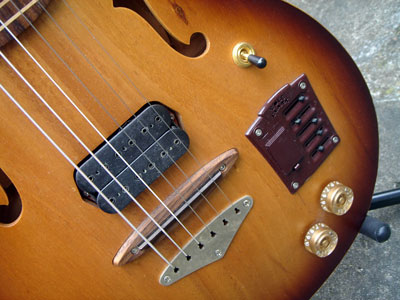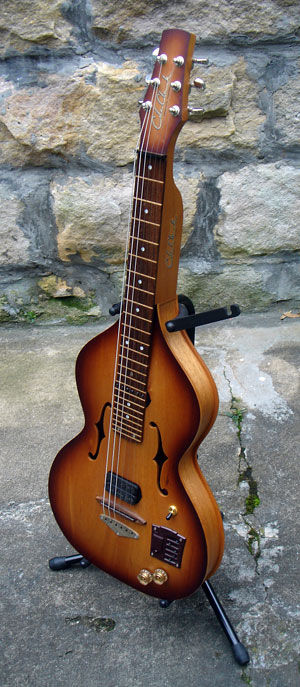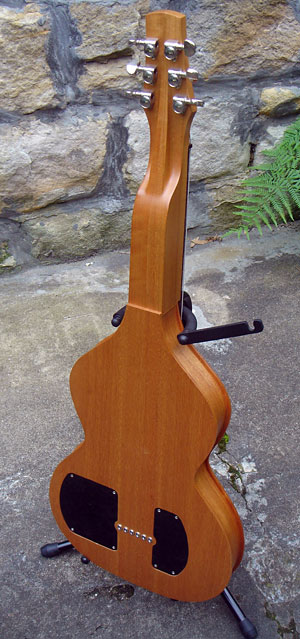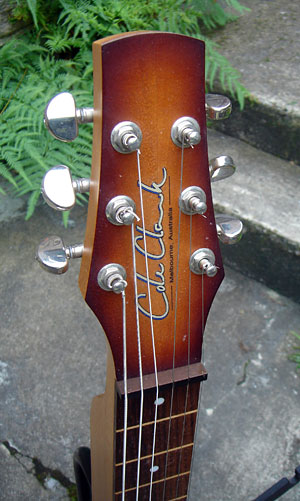c. 2004 Cole Clark Violap VL2P
I bought it in September 2008 from a guy in Melbourne Australia who knew someone at the Cole Clark factory and had this one made to order in about 2004. I sold it to a guy in France in March 2011 due to a change in financial priorities. There is a video of him playing it on YouTube.
I find a lot of these to be quite ugly but this one seems to have been given a lot of extra attention in the choice of wood, and the sunburst finish sets it off really well. I have never seen another one with this finish.
The VL2P is the top model, with two humbucking pickups as well as a piezo system for great amplified acoustic sound. I'm pretty sure this model is semi-solid like a Gibson 335, so that it can be played at very high volume with minimal feedback. It does not really produce enough volume to be played acoustically.
There are two output jacks so the humbuckers and piezos can be routed to separate amps. The 2nd humbucker is actually set behind the fretboard at the 17th fret marker, with only the poles sticking through the fretboard (see below).

As with all lap steels, there are no real frets - they are just position markers that look like frets. I kept this one tuned to open D.
Ben Harper has this model (slightly customised) and can be seen using it on at least one concert DVD.
More Info

The gold switch selects either or both of the humbuckers and the gold knobs are also for the humbuckers. The controls in the plastic panel are for the piezo system. The Cole Clark website described this system as follows:
Under the bridge are 6 of 5 x 10mm cylindrical piezo elements. There are three other piezos adhered to the face and or back of the instrument.
The instrument's first slide pot ... is a volume control. The third is treble, the fourth, mid range frequency control, and the last is bass cut and or boost.
The second is actually two pots wired as one. Moving the slider away from the player increases the volume of top end frequencies from the piezos under the saddle. Moving the slider towards the player amplifies top end frequencies sensed by the face sensor while reducing volume from similar frequencies from the under bridge and saddle assembly.
The bottom end or lower frequencies are always taken from the saddle.
It makes sense to amplify the face and or back of an acoustic guitar to more accurately simulate an acoustic performance. The 'blend', second slider, allows the player to return to, or blend the more typical underbridge piezo sound of the strings at the saddle with signal from the face and or back of the acoustic guitar.



